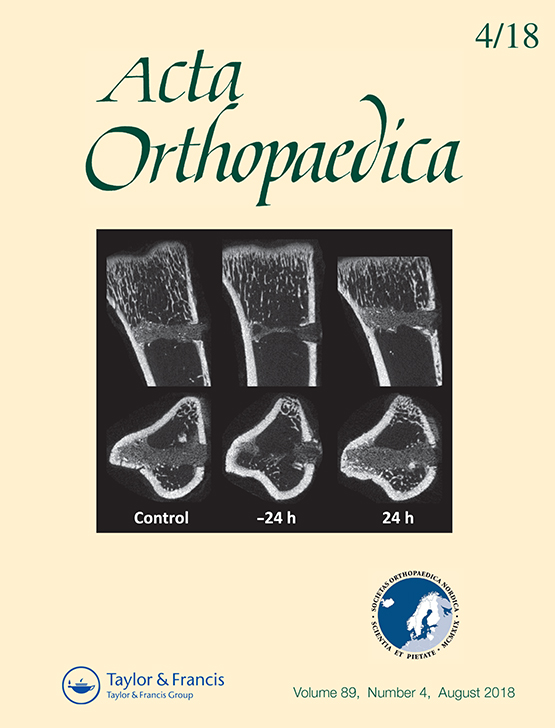Identification and treatment of residual and relapsed idiopathic clubfoot in 88 children
DOI:
https://doi.org/10.1080/17453674.2018.1478570Abstract
Background and purpose — The Ponseti treatment is successful in idiopathic clubfoot. However, approximately 11–48% of all clubfeet maintain residual deformities or relapse. Early treatment, which possibly reduces the necessity for additional surgery, requires early identification of these problematic clubfeet. We identify deformities of residual/relapsed clubfeet and the treatments applied to tackle these deformities in a large tertiary clubfoot treatment center. Patients and methods — Retrospective chart review of patients who visited our clinic between 2012 and 2015 focused on demographics, deformities of the residual/relapsed clubfoot, and applied treatment. Residual deformities were defined as deformities that were never fully corrected and needed additional treatment. We defined relapse as any deformity of the clubfoot reoccurring, after initial successful treatment, with necessity for additional treatment. Results — We identified 33 patients with residual and 55 patients with relapsed clubfeet. In both groups decreased dorsal flexion and adduction were the most often registered deformities. Furthermore, often equinus/decreased dorsiflexion, active supination, and varus occurred. In more than half, typical profiles of combined deformities were found. Relapses occurred at all stages of treatment and follow-up; half of the residual or relapsed clubfeet were identified before the end of the bracing period. In half of the patients, additional treatment consisted of the Ponseti treatment, one–quarter also required adaptation of the brace protocol, and one–quarter needed additional surgery. The Ponseti treatment was mainly reapplied if feet presented with relapses or residues until the age of 5. Interpretation — Practitioners should especially be aware of equinus/decreased dorsiflexion, adduction, and active supination as a sign of a residual or relapsed clubfoot. Due to the heterogeneous profiles of these clubfeet, treatment strategy should be based on a step-by step approach including recasting, bracing, and if necessary surgical intervention.Downloads
Download data is not yet available.
Downloads
Published
2018-07-04
How to Cite
Stouten, J. H., Besselaar, A. T., & Van Der Steen, M. C. (Marieke). (2018). Identification and treatment of residual and relapsed idiopathic clubfoot in 88 children. Acta Orthopaedica, 89(4), 448–453. https://doi.org/10.1080/17453674.2018.1478570
Issue
Section
Articles
License
Copyright (c) 2018 Jurre H Stouten, Arnold T Besselaar, M C (Marieke) Van Der Steen

This work is licensed under a Creative Commons Attribution 4.0 International License.
Acta Orthopaedica (Scandinavica) content is available freely online as from volume 1, 1930. The journal owner owns the copyright for all material published until volume 80, 2009. As of June 2009, the journal has however been published fully Open Access, meaning the authors retain copyright to their work. As of June 2009, articles have been published under CC-BY-NC or CC-BY licenses, unless otherwise specified.







